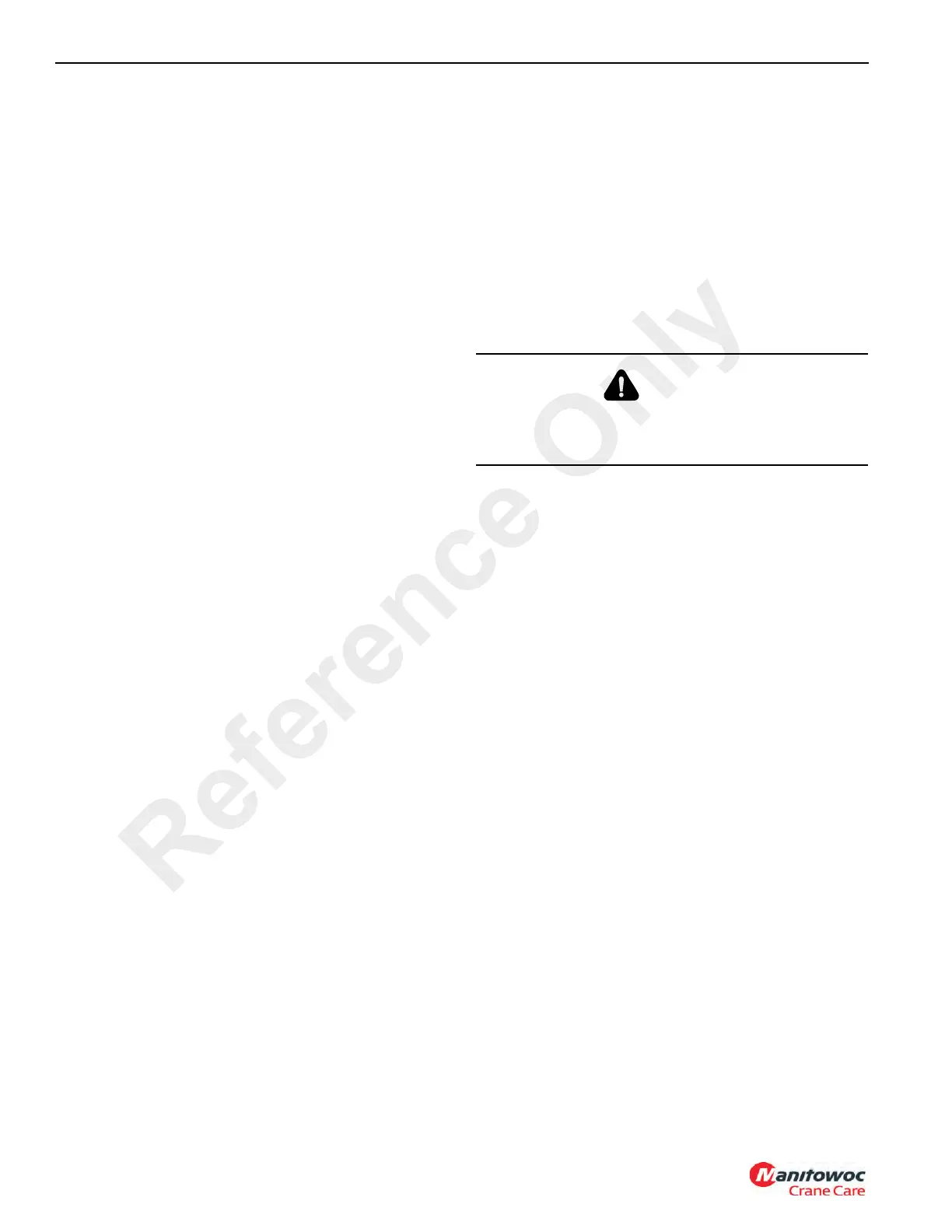HOIST AND COUNTERWEIGHT RT530E-2 SERVICE MANUAL
5-12 Published 4-22-15, Control # 556-00
a. With one layer of cable on the hoist drum, adjust the
bolts on the front of each side plate (that push
against each arm) so the roller applies pressure on
the layer of cable, and does not interfere with filler/
riser protrusions on the hoist drum flanges. Tighten
jam nuts to secure setting.
b. With a full drum of cable, the adjusting spring length
from eye to eye should not exceed 25.7 cm (10.12
in). Adjust rods as necessary and tighten jam nuts to
secure this setting.
Complete Assembly
Removal
1. Remove all tension from the springs on each side by
loosening the nuts and jam nuts.
2. Support the weight of the assembly and remove the two
bolts and washers securing each side plate to the hoist.
Remove the idler drum and cable follower assembly
from the hoist.
3. If necessary to completely disassemble or remove any
part of the assembly, refer to the applicable paragraphs
in this Sub-section.
Installation
1. Position the idler drum and cable roller assembly on the
hoist and secure each side plate to the hoist with two
bolts and washers.
2. Adjust the tension on the cable follower. Refer to
instructions in paragraph titled CABLE FOLLOWER -
Assembly and Installation in this Sub-Section.
HOIST DRUM ROTATION INDICATOR
SYSTEM
Description
The hoist drum rotation indicator system (Figure 5-6) is an
electrically operated system that provides the operator with a
touch indication of drum rotation so the operator will know if
and at what speed the hoist drum is rotating, even under the
most distracting conditions.
The rotation indicator system consists of the rotation
indicator sensor and thumb thumper solenoid. The rotation
sensor is located on the hoist. The pulsing thumb thumper
solenoid is located in the applicable hoist control lever
handle. Actuation of the thumb thumper is controlled by the
Can-Bus system from input supplied by the rotation indicator
sensor.
Maintenance
General
Proper circuit operation can be checked for each individual
electrical component. If a malfunction occurs within the
system, repairs should be limited to finding and replacing the
faulty component(s). To determine which component is at
fault, refer to the troubleshooting section of your Can-Bus
CD.
Rotation Sensor in Hydraulic Motor
The rotation sensor is screwed into the hoist housing and
senses the rotation of the primary drive end driven gear.
When installing the sensor, ensure it contacts the top land of
a gear tooth and not between teeth (Figure 5-6). Screw the
sensor in until contact is made, then back out 1/2 turn and
tighten lock nut.
Thumb Thumper Solenoid
The thumb thumper solenoid provides feedback proportional
to the hoist line speed by pulsing the rubber button on top of
the hoist controller. The thumb thumper will cease operation
at high line speeds to prevent damage to the solenoid.
DANGER
Disconnect the batteries before performing any
maintenance on this system. Serious burns may result
from accidental shorting or grounding of live circuits.
Reference Only

